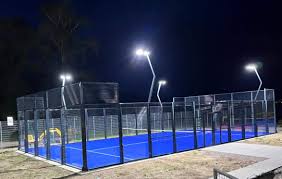

Exploring Badminton and Squash Courts A Dual Perspective on Indoor Sports
In the realm of indoor sports, badminton and squash stand out not only for their intense gameplay but also for the unique environments in which they are played. Both sports require dedicated courts that facilitate their fast-paced actions, and exploring these courts offers insights into the design, functionality, and overall atmosphere that enhance the athletic experience.
Design and Structure of Badminton Courts
A standard badminton court is 13.4 meters long and 6.1 meters wide for doubles, with a net height of 1.55 meters at the center. The playing surface is crucial; it is typically made of wood, ensuring optimal bounce and grip. High-quality courts are often lined with synthetic materials like polyurethane, which provide superior shock absorption and minimize the risk of injuries.
The court is divided into two equal halves by a net, and the layout allows players to demonstrate their agility and reflexes. The bright lines marking the service areas and boundaries create a visual contrast against the playing surface, making it easier to judge shots and movements. These elements come together to create a dynamic environment where players engage in rapid exchanges, testing their skill and strategy.
The Squash Court Experience

In contrast, the squash court is more enclosed, reflecting the game's emphasis on precision and tactical play. A standard squash court measures 9.75 meters long and 6.4 meters wide, with a height of at least 4.57 meters. The walls are an integral part of the game, as players utilize them to make strategic shots that can confuse opponents.
Squash courts are typically constructed from a combination of wood and glass panels, allowing spectators to view the action without obstructing the players’ experience. This transparency adds an exciting dimension, as players are aware of both their opponents and the audience. The lighting within a squash court is meticulously designed to avoid glare and ensure visibility, enhancing the focus required for this fast-paced sport.
Comparative Dynamics of Play
While both badminton and squash courts are designed for high-intensity play, they offer different experiences. Badminton is characterized by its explosive overhead shots and swift lateral movements, leading to a rhythmic back-and-forth dynamic. Players often engage in long rallies that can showcase incredible athleticism and finesse. On the other hand, squash emphasizes control and placement, with players aiming to dominate the center of the court and strategically return shots using walls to their advantage.
Conclusion The Essence of Indoor Sports
Both badminton and squash courts are thoughtfully designed spaces that serve as the backdrop for exhilarating competition. Each sport brings its own nuances, challenges, and strategies, making the experience of playing on these courts both enjoyable and rewarding. Whether you’re smashing a shuttlecock over the net or strategically placing a squash ball against the wall, the importance of these courts in facilitating skill development and fostering athletic passion cannot be overstated. As athletes continue to engage in these sports, the courts will remain vital arenas of excitement and challenge, encouraging both personal growth and community connection.
High-Performance Industrial Flooring Solutions China Paddle Tennis Court for Sale
High-Performance Industrial Flooring Solutions Durable & Cost-Effective
Homogeneous Transparent Floor – Durable & Stylish Rubber Floor Solutions
Premium Homogeneous Transparent Floor for Durable & Stylish Spaces Rubber Floor Solutions
Premium Sports Floor Solutions Durable PVC Sports Floor & Rubber Floor for Gyms
Durable Rubber Composite Floor Premium Rubber Floor & Mats Solutions